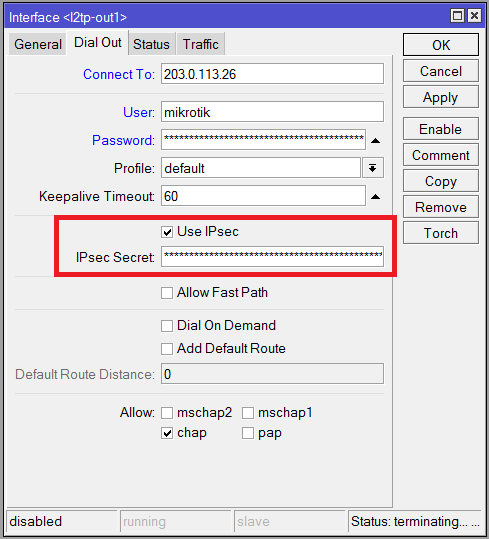

During this course, I will explain also about a lot of security terms that we always hear and is used on IPSEC such as: Encryption, Hashing, Authentication, Deffie-Hellman, Symmetric and Asymmetric keys, etc.Īfter the theoretical part, I am going to do LABs where I will show you how to configure correctly IPSEC on MikroTik Routers and we will test it to see if it works good. I have designed this course to help you to understand how IPSEC works, that means that big part of this course is going to be a theoretical part explaining in details all parts of IPSEC. However, configuring IPSEC correctly is a challenge because IPSEC is considered as a Framework protocol which has many sub-protocols and phases under its umbrella. Internet Protocol Security, or what is known as IPSEC, is a VPN protocol suite widely used nowadays in our network to connect 2 or more offices securely to each other using the public internet service, and this will save for companies a lot of cost and time instead of using dedicated leased lines between their offices. Configuring IPSEC site-to-site using IKEv2.Configuring IPSEC site-to-site using IKEv1.Understand the difference between IKEv1 & IKEv2.

Understand the difference between Main and Aggressive mode on IKE Phase 1.Understand what is the initiator to start the IPSEC VPN.

Understand the IPSEC negotiation process.Understand IPSEC Negotiation Protocols: AH vs ESP.



 0 kommentar(er)
0 kommentar(er)
